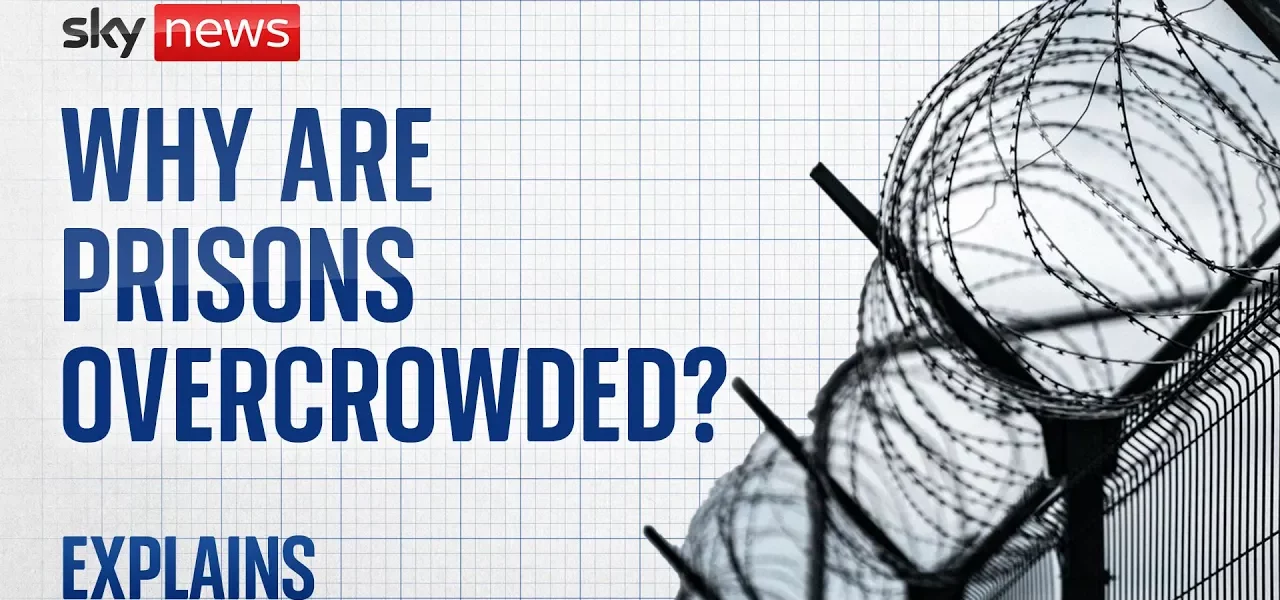Prison Overcrowding Crisis in England and Wales

The prison system in England and Wales is currently grappling with a severe overcrowding crisis, with facilities operating at near maximum capacity. This article delves into the historical context, contributing factors, and potential solutions to this pressing issue.
Introduction
The issue of prison overcrowding in England and Wales has reached alarming levels, with some facilities operating at 99% capacity. Over the past three decades, the prison population has more than doubled, raising concerns about the effectiveness of the criminal justice system and the capacity of prisons to rehabilitate offenders. Understanding how we arrived at this point requires an exploration of historical policies, societal attitudes towards crime, and the implications of current sentencing practices.
Historical Context and Growth of Prison Population
The roots of the current overcrowding crisis can be traced back to the early 1990s. In 1993, then Conservative Home Secretary Michael Howard proclaimed that “prison works,” promoting a policy of harsher sentencing aimed at deterring crime. This philosophy led to significant changes in the criminal justice system.
Rapid Increase in Prison Population
Since Howard’s assertion, the prison population in England and Wales has surged from approximately 43,000 to over 88,000 inmates by October 2023. The dramatic rise in numbers can be attributed to:
- Longer Sentences: Individuals convicted of serious crimes, such as manslaughter, have faced increasingly lengthy sentences over the years.
- Influx of Convictions: Despite claims that more individuals are not being convicted, the backlog in the courts during the COVID-19 pandemic contributed to a temporary decline in numbers.
Current Statistics and Challenges
As of October 2023, the total number of incarcerated individuals reached a historic high of 88,000, nearly matching the system’s maximum capacity of 88,889. This crisis raises several questions about the effectiveness and fairness of current sentencing practices.
Impact of the COVID-19 Pandemic
The pandemic initially provided a brief respite from overcrowding, with numbers dropping to just under 78,000 in 2021. However, as courts resumed operations and tackled their backlogs, the population surged once more, exacerbating the overcrowding crisis.
Role of Legislative Changes
Legislative actions aimed at being “tough on crime” have significantly influenced the prison population. Trends indicate that:
- The average sentence for manslaughter rose from 59 months in 2008 to 106 months by 2021.
- Similar increases are evident for other serious crimes, including Grievous bodily harm and robbery.
Underlying Causes of Overcrowding
Several factors contribute to the chronic overcrowding in prisons, which include:
Awaiting Trial and Sentencing
A significant number of individuals are currently imprisoned while awaiting trial or sentencing. This issue has been exacerbated by:
- A backlog of cases due to the pandemic.
- Historical underfunding of the judicial system.
- A shortage of judges, which has slowed down the judicial process.
Prison Building Programs
In 2021, the government initiated a program to construct 20,000 new prison places by the mid-2020s. However, due to planning delays, only 5,400 additional places have been completed as of July last year. This slow pace raises concerns about the government’s commitment to addressing the crisis effectively.
Potential Solutions and Future Outlook
With the crisis reaching critical levels, various stakeholders, including prison reform advocates, are calling for changes to the current system. Recently appointed Prisons Minister James Timpson has been a vocal advocate for reform, emphasizing the need for a more rehabilitative approach to sentencing.
Reevaluation of Sentencing Practices
Timpson has pointed out that many individuals currently imprisoned do not belong there or are serving sentences longer than necessary. Proposed changes include:
- Lowering the automatic release point for prisoners from 50% to 40% of their sentences.
- Creating exemptions for those convicted of serious offenses, including terrorism and violent crimes.
Long-Term Solutions Needed
While the recent announcements by Justice Secretary Shabana Mahmood are seen as immediate measures, many experts argue that a long-term strategy is crucial to prevent future overcrowding. This could involve:
- Investment in community-based alternatives to incarceration.
- Enhanced funding for legal aid to reduce backlog and ensure fair trials.
- Focus on rehabilitation and reducing recidivism rates.
Conclusion
The overcrowding crisis in prisons across England and Wales is a multifaceted issue that requires urgent attention. While recent measures may provide temporary relief, the long-term solution lies in rethinking sentencing practices and investing in alternatives to imprisonment. As we move forward, it is crucial for policymakers, advocates, and society to collaborate in creating a more effective and humane criminal justice system. For more insights on criminal justice reform, check out our related articles on prison reform initiatives and the impact of sentencing reforms.
“`




